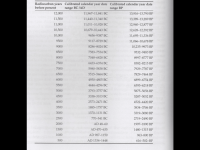uniface
Silver Member
I tried to find an old thread that discusses 14C dating, but search features (here, google) are useless, and I don't have an hour to scroll through pages of posts looking for one. So, for the sake of perspective, from a lab director :
Recommended to those with enough intelligent interest in the 14C reliability issue to read through an informed, detailed overview of it :
The Self-Deception of C-14 and Dendrochronology
Citation [Ogden 1977, 173]J.G. Ogden said:It may come as a shock to you, but fewer than 50 percent of the radiocarbon dates from geological and archaeological samples in northeastern North America have been adopted as 'acceptable' by investigators
Recommended to those with enough intelligent interest in the 14C reliability issue to read through an informed, detailed overview of it :
The Self-Deception of C-14 and Dendrochronology
Last edited:
Upvote
0







